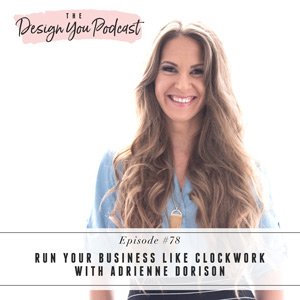
Friends, I have a huge treat for you on the podcast this week. If you’ve been a listener for a while, you might know of a book called Clockwork that I rave about all the time. Well, today was definitely my lucky day because Adrienne Dorison, who worked with Mike Michalowicz on the book is here to unpack some of the tools.
Adrienne is the co-founder of Run Like Clockwork, alongside her business partner Mike Michalowicz, where she equips CEOs to design a business and team to run itself, like clockwork. I can relate to so much of what she shares and am in the process of putting it to work in my own business. Implementing just one of these concepts can absolutely grow your business, even if you’re a solopreneur, so I hope you get some great takeaways.
If the idea of being able to take a month off your business completely unplugged, and not have your business fall apart, not have money stop rolling in, or have clients mad at you sounds impossible right now, this episode is for you. This could be the start of the most exciting transformation in your business ever.
If you want to keep this conversation going, you have to join my free Design You Podcast community on Facebook. We have great conversations over there about the podcast episodes and our podcast guests are in there too! So head on over and I’ll see you there!





